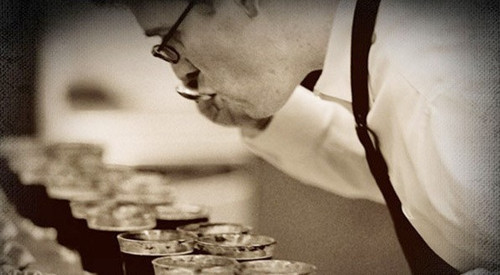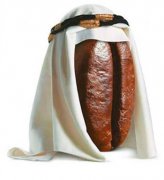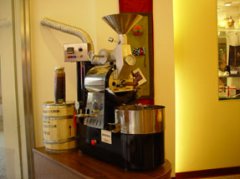ESPRESSO Baking Tips start with mixed beans Coffee mix

Understanding the significance of baking degree and knowing their flavor performance after extraction is the key to ensure the performance quality in the highest cup. Generally speaking, the deeper the roasting, the more the acidity decreases and the bitterness increases, but the deeper the roasted coffee beans, the longer the flavor of the extract lasts. The sweet taste of deep-roasted espresso was significant, but the other flavor characteristics of coffee beans were impaired.
So how do we decide which baking degree to use for espresso? how shallow and deep espresso beans can be baked and still have good espresso performance? And how do you use these different baking styles to add features to your ripe bean retail business? Please take a look.
Start with mixed beans.
When we talk about baking beans for espresso, we are actually talking about the science of mixed beans. The highest sweet spots of all kinds of coffee beans from different countries appear at different baking points, so bakers must find a balance between baking and mixing beans in order to make a good cup of espresso. This knowledge begins with the degree of baking and the selection of beans, as well as the baking master's own taste acuteness. If you give full play to these three key points, you will have a good chance to produce espresso with a balanced export feel and a pleasant flavor. Of course, there are many subjective taste views, but based on my personal experience over the years, I can give you some suggestions.
When using Beiyi roasting, the bean selection process is the key point. You must select the coffee beans with the lowest acidity when roasting. According to my personal Beiyi formula, I use the least sour Brazilian beans out of 10 Brazilian beans; but if I go deeper, if I want to bake the formula, I probably don't need to think about the acidity. About 50% of the Brazilian beans can meet this demand. If you want to use the deepest Nanyi baking, then every Brazilian can. Generally speaking, the Beiyi recipe must use arabica beans with mild flavor and low acidity. The classic formula is Mocha-Java, combined with Yemenmoka and Java arabica beans, but there is another popular and widely used alternative formula, which is Ethiopia Harar plus Sumatra Mandheling.
The choice of beans in the Chinese formula is more flexible, but you may have to choose several beans with a strong style, such as Ethiopia Harar. On the other hand, many beans with high acidity, such as Costa Rica and Kenya, reach their peak when they are baked in Chinese style.
Nanyi baking is too deep, so you have to use a very strong recipe, usually rough and strong African beans are very suitable for this way, such as Burundi or Harar. Personally, I think that when you enter the baking degree as deep as French Roast, you have a wide range of flexibility in choosing beans, because at this time, most of the qualities of coffee beans are baked off.
Important Notice :
前街咖啡 FrontStreet Coffee has moved to new addredd:
FrontStreet Coffee Address: 315,Donghua East Road,GuangZhou
Tel:020 38364473
- Prev

Coffee beans were not used to make coffee at first.
Coffee beans are not used to make coffee at first, because coffee beans are very high in calories. At first, people eat with their most common fruits on the spot, and they don't think about soaking them in water or anything. In Arabia, there are a lot of coffee beans, because Arabs like to do business everywhere. Coffee beans are not used to make coffee at first, because coffee beans are high in calories.
- Next

Freshness and best flavor of self-baked coffee beans
Freshness and best flavor the flavor of coffee beans is the best on the first day after baking, after which the flavor of coffee beans will decay brutally and rapidly. Because after baking, the coffee bean itself will release carbon dioxide to prevent the attack of oxidation, but after the period of carbon dioxide emission, the meticulous coffee flavor oil will be oxidized and stale.
Related
- Guji coffee producing area of Guji, Ethiopia: Humbela, Shakiso, Wulaga
- What is the most expensive variety of Qiloso in BOP multi-variety group?
- How to store the coffee beans bought home?
- Why are Yemeni coffee beans so rare now?
- Ethiopian Sidamo all Red Fruit Sun Sun Santa Vini Coffee beans
- SOE is mostly sour? What does it mean? Is it a single bean? what's the difference between it and Italian blending?
- Is Italian coffee beans suitable for making hand-brewed coffee?
- How to choose coffee beans when making cold coffee? What kind of coffee beans are suitable for making cold coffee?
- Just entered the pit to make coffee, what kind of coffee beans should be chosen?
- Can only Japan buy real Blue Mountain Coffee? What are authentic Jamaican Blue Mountain coffee beans?

